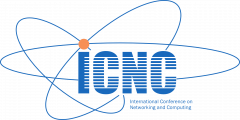Paper Submission
Paper Submission Web page
Papers must be submitted through EasyChair by June 10, 2010 June 28, 2010 (Extended).
Paper Submission Gudelines
Papers reporting original and unpublished research results and experience are solicited. Papers will be selected based on their originality, timeliness, significance, relevance, and clarity of presentation. Accepted and presented papers will be published in the conference proceedings. Submissions imply the willingness of at least one author to register, attend the conference, and present the paper. Authors should upload their manuscripts in the PDF.
Two types of submissions are considered for publication: Regular paper and Short Paper. Both types of submissions should include abstract, key words, the e-mail address of the corresponding author. A short paper must be designated by its title ended with “(short paper)”. The submission of a regular paper should be 8 pages (maximally 10 pages) in length, including all tables and figures. The submission of a short paper should be 5 pages (maximally 7 pages) in length, including all tables and figures. Ongoing / visionary / suggestive works to pioneer new, innovative, and risky research topics on all aspects of networking and computing are welcome for publication in Short Paper format.
Paper Format
It is recommended to use IEEE standard two-column format for conference proceedings. Please see Manuscript Templates for Conference Proceedings for the details. Also, please note that the final manuscript for publication must use this template.
Submission Instruciton
Papers should be submitted though EasyChair(EasyChair). If an author does not have EasyChair account, it must be created. When the author submit a paper, one of the three tracks must be specified:
Track 1: Algorithms and Applications
- Parallel/distributed algorithms
- Hardware algorithms
- Data mining and web mining algorithms
- Image processing and computer graphics
- Network routing and communication algorithms
- Bioinformatics
- Intelligent computing and neural networks
- Privacy preserving computation
- Applied cryptography
- Database security
- Security protocols
Track2: Computer Systems
- Parallel/distributed architectures
- Cluster computing
- Grid computing systems
- Cloud computing
- Multicore computing
- CUDA/GPGPU
- PVM/MPI
- Supercomputing
- Heterogeneous and multimedia systems
- High-performance scientific computing
- FPGA and reconfigurable architecture
- RFID
- Embedded systems
Track3: Network and Communication
- Interconnection networks
- Distributed data and knowledge based systems
- Distributed system/network security
- Reliability and fault-tolerance
- Trusted systems
- Ubiquitous computing systems
- P2P networks
- Content delivery networks
- Wireless networks and mobile computing
- Ad-hoc and sensor networks
- Optical networks
- Access control and authorization

